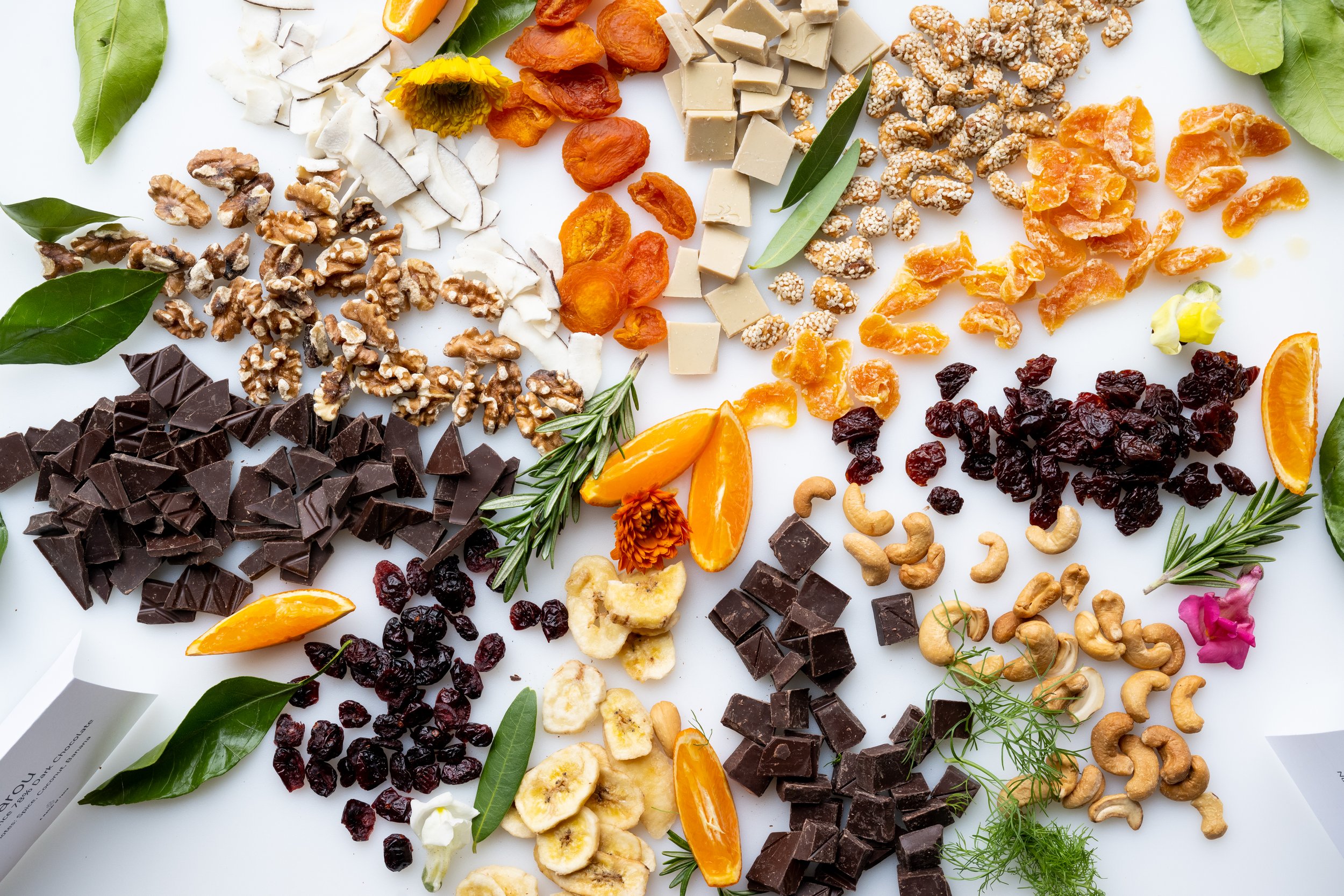
Chocolate that Matters
Explore true metrics of success with socially conscious and sustainable chocolate
What does success really look like?
How do we measure what truly matters? Our chocolate workshop, Measuring What Matters, is an exploration of flavor, ethics, and creativity that uses the world of single-origin craft chocolate to facilitate a rich discussion on making shared values actionable. This immersive tasting & making experience is built around the Hierarchy of Metrics framework, a powerful tool for aligning actions with goals.
We lead a guided tasting of ethically sourced chocolates, exploring how different origins and processes result in unique flavor profiles.
This sensory exploration serves as a foundation for a hands-on session where groups link measures of success to Mission, Objectives, and Operations—to define what value means when it’s provable.
To cement the message and the memory, we end by crafting our own chocolate truffles.
"The training was a standout—our team's favorite part! Who knew chocolate could enhance learning and feedback?" - Carol S.
What Chocolate Means to Us: Respectful Engagement
A Matter of Taste began over a shared love of ethically produced fine chocolate, and our approach to chocolate remains rooted in a deep respect for its origins and its terroir—the unique environment where the cacao is grown. Committed to ethical and transparent sourcing, we only showcase craft chocolate makers who source and manufacture their bars directly in cacao-growing countries.
Why this approach matters:
Chocolate is made from the seeds of the pod of the cacao tree. The seeds, called cacao beans, are hard and bitter. They must be fermented and roasted to produce the chocolate flavors and textures we're familiar with.
Indigenous to Central America, cacao has been cultivated on plantations in colonized countries near the global Equator and transported for processing in Europe and North America for sale as chocolate world-wide, with lasting detrimental impacts to the social structures, economies, and environments of cacao-growing communities around the world.
Craft chocolate making in region enables premium prices for farmers, skilled jobs retained in local communities, and honors the integrity of the cacao, whether as a heritage product or a new regenerative path. In our tastings, we feature these unique regional flavor profiles and celebrate the people and places behind every bar, highlighting the measures that do matter.
We’re proud to support these brands as they craft products that showcase the unique flavor profiles of their region. You’ve likely never had chocolate that tastes quite like this before!
Make It Your Own:
Recipes and Resources
Our curated chocolate collections feature a rotating selection of craft chocolate bars, including Marou (Vietnam), Cacaosuyo (Peru), Cuna de Piedra (Mexico), and Fu Wan (Taiwan). We also offer Single Origin Truffle Kits, complete with our chocolate flavors guide, providing a creative and delicious way to engage with the principles of our workshops in the comfort of your own home.
Like wine or olive oil, the terroir of the chocolate - the unique flavors that come from the environment where the plant is grown - can contribute to their distinct flavor profile.
Follow this guide for a primer in chocolate and a step by step in-depth tasting experience.
You’ll Need:
1-2 chocolate bars (your choice or curated by us!)
1/4 cup dried fruits, such as cherries, prunes, mango, and banana
1/4 cup roasted nuts, like walnut, coconut, and cashew
1 teaspoon ground coffee
1/4 teaspoon ground cinnamon
2-3 plain crackers
8 ounces room temperature water
Open your chocolate bars, taking care to keep them organized. Arrange the dried fruits, nuts and coffee and cinnamon on a plate. Have a sip of water and a cracker to cleanse your palate.
Bring a bar of chocolate to your nose and inhale deeply. Take a small bite and chew slowly, allowing it to coat your tongue before swallowing. Take another bite and try to breathe in and out at least once while the chocolate melts.
Cleanse your palate again with water and a bite of cracker then repeat these steps with the other chocolate bar. What differences can you taste? What flavors do they share?





